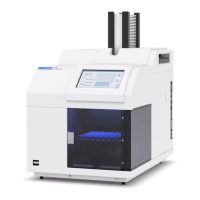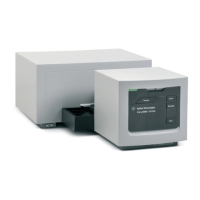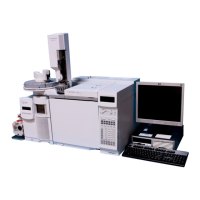7 Gas Selection and Plumbing
GC/MS Gas Requirements
Site Preparation Guide 45
Requirements for hydrogen as a carrier gas or for use in JetClean systems
Not all systems can use hydrogen as a carrier gas. See Gas Selection.
Hydrogen can be supplied from a generator or from a cylinder.
Agilent recommends use of a high-quality hydrogen gas generator. A high-quality generator
can consistently produce purity > 99.9999%, and the generator can include built-in safety
features such as limited storage, limited flow rates, and auto-shutdown. Select a hydrogen
generator that provides low (good) specifications for water and oxygen content.
If using a hydrogen gas cylinder, Agilent recommends use of Gas Clean Filters to purify the
gas. Consider additional safety equipment as recommended by your company safety
personnel.
GC/MS Gas Requirements
Table 20 lists typical flows resulting from selected carrier gas source pressures.
7010 and 7000 Series MS
Table 21 lists typical flows resulting from selected carrier gas source pressures.
Table 19 Delivery pressures for Auxiliary EPC and PCM modules, in kPa (psig)
Aux EPC PCM 1 PCM 2 or PCM Aux
Carrier (max) 827 (120) 827 (120) 827 (120) with Forward pressure control
345 (50) with Backpressure control
Table 20 5977 and 5975 Series MSD carrier gases
Carrier gas requirements Typical pressure range Typical flow (mL/min)
Helium (required)
(column and split flow)
345 to 552 kPa
(50 to 80 psi)
20 to 50
Hydrogen (optional)
*
(column and split flow)
* Hydrogen gas can be used for the carrier gas but specifications are based on helium as the
carrier gas. Please observe all hydrogen gas safety cautions.
345 to 552 kPa
(50 to 80 psi)
20 to 50
Methane reagent gas
(required for CI operation)
103 to 172 kPa
(15 to 25 psi)
1 to 2
Isobutane reagent gas (optional) 103 to 172 kPa
(15 to 25 psi)
1 to 2
Ammonia reagent gas (optional) 34 to 55 kPa
(5 to 8 psi)
1 to 2
Carbon dioxide reagent gas
(optional)
103 to 138 kPa
(15 to 0 psi)
1 to 2

